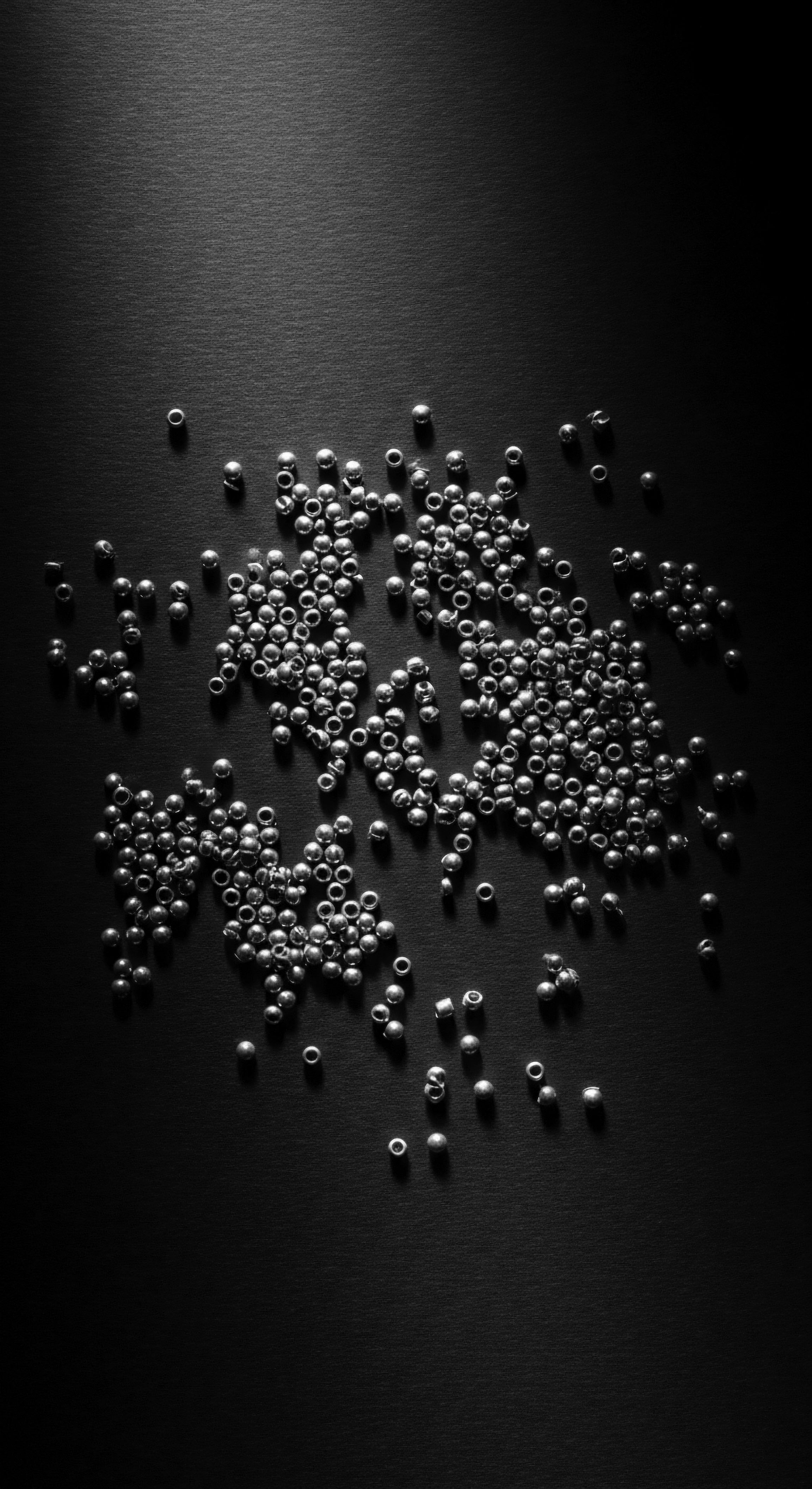
Roots
Consider the resilient coils and luminous waves that crown generations of Black and mixed-race communities. These strands are more than mere physical attributes; they hold narratives of ancestral wisdom, echoes of journeys spanning continents, and a profound testimony to enduring identity. The inherent strength, vitality, and unique qualities of textured hair have long sparked wonder, leading us to seek explanations for its remarkable persistence across centuries. One thread in this intricate inquiry leads directly to the sustenance that nourished bodies and spirits long ago ❉ Can traditional diets explain textured hair resilience over centuries?
This question invites us to look beyond topical applications and styling practices, drawing our gaze inward to the very cellular foundations of hair itself. It calls upon us to recognize that hair, like all living tissue, draws its very being from the nutrients absorbed by the body. For communities whose hair has weathered the winds of time, whose cultural heritage is deeply intertwined with their crown, the inquiry into ancestral dietary patterns becomes a compelling voyage. What hidden power did the harvests of their lands, the foods prepared with generational wisdom, lend to the hair that became a beacon of identity and survival?
Textured hair, a testament to enduring identity, draws its foundational strength from nutritional legacies passed through generations.

Hair’s Elemental Blueprint
To truly understand the legacy of strength, we first reckon with the elemental blueprint of hair. Each strand is a complex biological marvel, primarily composed of a protein known as Keratin. This fibrous structure, rich in sulfur-containing amino acids like cysteine, dictates much of hair’s physical properties, including its elasticity and robustness. Hair follicles, embedded within the scalp, are the living factories producing these strands.
Their health and optimal function depend entirely upon a consistent supply of vitamins, minerals, and proteins. Without these essential building blocks, hair growth can falter, leading to changes in quality, density, and overall vitality.
Traditional diets, often centered on whole, unprocessed foods, naturally provided a spectrum of these vital nutrients. Consider the traditional African diets, which, for countless generations, consisted of diverse indigenous grains, legumes, vegetables, and, where accessible, animal products. These food systems were not merely about sustenance; they represented a deep, often spiritual, connection to the land and its bounty. They were diets shaped by climate, available resources, and communal knowledge, resulting in nutritional profiles remarkably suited to supporting overall wellbeing, including the resilience of hair.

Ancestral Nutrition and Hair Biology
The biological interplay between traditional diets and hair health is profound. Hair is, in essence, a reflection of internal health. When nutritional intake is robust, the body efficiently channels resources to less critical tissues, such as hair, allowing for optimal growth and structural integrity. Conversely, dietary deficiencies often manifest first in the hair, signaling a lack of essential components.
- Protein Richness ❉ Many traditional African diets centered on plant-based proteins such as various types of beans, lentils, and indigenous grains like millet and sorghum. These provided the necessary amino acids for keratin synthesis. Animal proteins, when available, supplemented these vital building blocks.
- Micronutrient Density ❉ Leafy greens, tubers, and diverse fruits, staples in many ancestral diets, were abundant in vitamins A and C, iron, and zinc. Vitamin A promotes the production of sebum, the scalp’s natural moisturizer, while vitamin C is critical for collagen formation, which strengthens hair follicles. Iron ensures oxygen transport to these follicles, and zinc supports tissue repair and growth.
- Healthy Fats ❉ Sources like nuts, seeds, and certain fish provided essential fatty acids, including omega-3s, which contribute to scalp health, reducing inflammation and supporting hydration.
These dietary components were not consumed in isolation but as part of synergistic food systems, where the combination of ingredients enhanced nutrient absorption and utilization, providing a comprehensive internal foundation for vibrant hair.

Ritual
The relationship between traditional diets and textured hair resilience extends beyond mere biological input; it intertwines with the very fabric of ritual and practice. Ancestral communities did not merely eat for survival; their dietary choices were deeply embedded in ceremonies, communal gatherings, and generational wisdom. This connection suggests that the influence of diet on hair’s enduring strength was not a solitary scientific event, but rather a holistic phenomenon, a silent partner to the hands that styled and cared for each strand. How did these long-held eating patterns become part of the larger hair heritage, influencing not just the health of the individual strand but the very possibility of intricate, protective styles that have lasted for centuries?
The ability of textured hair to withstand elaborate styling, to hold its form for extended periods, and to resist breakage under various manipulations speaks volumes about its inherent strength. This resilience, born from robust internal nourishment, allowed for the development of complex braiding, twisting, and coiling techniques that served multiple purposes ❉ aesthetic expression, social communication, and scalp protection. Without a foundation of well-nourished, strong hair, many of these heritage styles would have been simply untenable, leading to damage rather than distinction.
Traditional diets provided the internal nourishment that enabled complex, resilient textured hair styles.

Styling as a Mirror of Internal Health
In many ancestral societies, hair was a powerful medium of communication, indicating age, marital status, social standing, tribal affiliation, and even spiritual beliefs. The very creation of these symbolic hairstyles often required hair with a certain pliability, tensile strength, and ability to retain moisture. Hair nurtured by a diet rich in proteins, healthy fats, and micronutrients naturally possesses these attributes. Such hair would be less prone to brittleness, split ends, or excessive shedding, making it a receptive canvas for the hands of the community’s hair artists.
The wisdom of these communities recognized that external care alone could not sustain hair’s vitality. A holistic approach meant understanding that what went into the body was as vital as what went onto the hair. This ancestral wisdom, passed down through oral traditions and communal practices, implicitly connected the consumption of certain foods with overall vigor, a vigor that inevitably reflected in the hair.
| Dietary Component Complete Proteins (e.g. legumes, certain grains, animal sources) |
| Role in Hair Strength & Pliability Builds strong keratin structures, reducing breakage and increasing elasticity. |
| Impact on Traditional Styles Allows for tight braiding, twisting, and knotting without undue stress; styles hold form longer. |
| Dietary Component Healthy Fats (e.g. nuts, seeds) |
| Role in Hair Strength & Pliability Supports scalp health, regulates sebum production, and contributes to hair's natural sheen and moisture retention. |
| Impact on Traditional Styles Hair is less dry and prone to frizz, aiding in sleekness and definition needed for intricate patterns. |
| Dietary Component Iron & Zinc (e.g. leafy greens, beans) |
| Role in Hair Strength & Pliability Promotes healthy hair follicle function and cellular repair, minimizing shedding. |
| Impact on Traditional Styles Contributes to hair density and overall volume, essential for creating full, sculptural styles. |
| Dietary Component Ancestral diets, through their rich nutritional profiles, laid the groundwork for hair that could express cultural narratives through enduring styles. |

The Echo of Ancient Ingredients in Modern Resilience
Even in contemporary hair care, the echo of ancient ingredients and the nutritional principles they represent persist. Many natural hair products today celebrate components like shea butter, various plant oils, and herbal extracts that were historically integrated into both diet and topical application. The deep respect for these ingredients, cultivated through centuries of observed benefits, stems from a time when the distinction between food, medicine, and beauty preparation was often fluid. Communities understood the interconnectedness of these realms.
The use of millet, a resilient grain, in traditional diets across parts of Africa, offers an insightful parallel. Millet is recognized for its high protein, fiber, and micronutrient content, including essential minerals that support hair health. Its consistent presence in ancestral meals would have provided ongoing internal fortification.
This strength then manifested in hair that could be manipulated into elaborate, often gravity-defying styles, each bearing cultural significance. The very act of styling became a testament to the life-giving force of the land and the wisdom of its people.

Relay
The question of whether traditional diets explain textured hair resilience over centuries demands an exploration that moves beyond simple correlations. It necessitates a deep scientific and cultural inquiry, a relay of understanding from the biological to the sociological. This is where the wisdom of ancestral practices finds validation in contemporary research, where the enduring strength of textured hair can be seen as a living testament to dietary heritage. How did specific dietary compounds contribute to the unique structural integrity of textured hair, enabling its persistent strength against environmental stressors and cultural impositions throughout history?
For generations, communities with textured hair faced, and continue to navigate, environments and challenges that might otherwise compromise hair integrity. From the intensity of tropical sun to the psychological weight of cultural erasure during periods such as the transatlantic slave trade, their hair endured. This profound resilience suggests an internal fortification, a bedrock of health that allowed hair to not only survive but also to remain a powerful symbol of identity and resistance. The diets consumed over millennia played a foundational, perhaps underappreciated, role in this enduring capacity.
The consistent nutrient profile of traditional diets built a resilient foundation for textured hair, enduring through historical adversities.

Nutritional Underpinnings of Hair Structure
The structural integrity of textured hair, with its unique helical twists and varying curl patterns, is inherently linked to the availability of specific macronutrients and micronutrients. Keratin, the primary protein composing hair, relies on a steady supply of amino acids. Foods common in traditional African diets, such as various legumes, root vegetables, and leafy greens, provided a rich spectrum of these amino acids. For instance, cowpeas and bambara groundnuts, staples in many West African food systems, are significant plant-based protein sources, offering amino acids that directly contribute to keratin formation.
Beyond protein, the role of specific micronutrients cannot be overstated. A study reviewing African leafy vegetables (ALVs) consumed in sub-Saharan Africa highlighted their substantial micronutrient content. For example, Chenopodium Album (white goosefoot), an indigenous leafy vegetable, was found to contain significant amounts of iron, zinc, and magnesium.
These minerals are crucial for various enzymatic processes that support hair follicle health and the proper formation of hair proteins. Iron carries oxygen to the follicles, supporting cell growth, while zinc aids in the repair and growth of hair tissue and helps maintain the oil glands around the follicles.

A Historical Example of Dietary Impact on Hair
A compelling, albeit somber, historical observation offers a powerful, albeit indirect, lens into the connection between diet and hair health. During the periods of severe nutritional deprivation, such as that experienced by enslaved Africans during the transatlantic slave trade and subsequent periods of plantation life, accounts often reference the visible deterioration of hair. While historical records of specific hair quality metrics are scarce, medical observations from the 19th century in tropical Africa by European doctors noted symptoms of malnutrition in children, including Hair and Skin Changes.
This observation, though not a direct scientific study on resilience, provides a powerful negative control. When traditional diets, which were typically varied and nutrient-dense, were forcibly replaced by limited, calorie-poor, and nutritionally deficient rations—often predominantly starchy foods lacking essential vitamins and minerals—the physical manifestations of such deficiency, including altered hair quality, became evident. (De Mast et al.
2025). The contrast between the presumed hair vitality in pre-colonial societies, where hair was often celebrated for its thickness and health, and its decline under forced dietary shifts, suggests the profound impact of ancestral nutrition on hair’s inherent resilience.
The forced dietary transitions during and post-slavery led to widespread micronutrient deficiencies that compromised overall health, including hair health. A study on traditional African diets noted their historical association with lower rates of chronic diseases in rural areas where these diets persisted. It also pointed out that while these diets were generally rich in complex carbohydrates and fiber, they could sometimes be low in certain micronutrients if diversity was lacking, or if access to traditional animal proteins was limited. However, the overall nutrient density from a diversity of traditional plant foods, especially indigenous vegetables and grains, far outweighed the nutritional deficiencies of imposed colonial diets.
| Nutrient Vitamin C |
| Key Traditional African Food Sources Red bell peppers, leafy greens (e.g. Ugu, Amaranth), mangoes, papayas |
| Biological Role for Hair Essential for collagen production, strengthening hair follicles, and antioxidant protection. |
| Nutrient Iron |
| Key Traditional African Food Sources Spinach, Ugu, Amaranth, beans, lentils, millet, sorghum |
| Biological Role for Hair Facilitates oxygen transport to hair follicles, crucial for hair growth and preventing shedding. |
| Nutrient Zinc |
| Key Traditional African Food Sources Beans, nuts (groundnuts, cashews), sunflower seeds, sesame seeds, oysters (where applicable) |
| Biological Role for Hair Aids in hair tissue growth and repair, supports proper function of oil glands around follicles. |
| Nutrient Biotin (Vitamin B7) |
| Key Traditional African Food Sources Eggs, fish, meat, sweet potatoes, spinach, beans |
| Biological Role for Hair Supports hair's keratin structure, promoting strength and preventing brittleness. |
| Nutrient Omega-3 Fatty Acids |
| Key Traditional African Food Sources Fatty fish (mackerel, sardines), walnuts, flaxseeds, sesame seeds |
| Biological Role for Hair Promotes scalp health, reduces inflammation, and contributes to hair's shine and elasticity. |
| Nutrient The diverse, nutrient-dense traditional diets provided a comprehensive internal support system for textured hair, underpinning its enduring strength. |

Modern Scientific Affirmations of Ancestral Wisdom
Today, modern nutritional science increasingly validates the wisdom embedded in ancestral dietary patterns. Research consistently highlights the critical role of protein, vitamins (A, C, D, E, B-complex), and minerals (iron, zinc, selenium) in maintaining hair health and promoting growth. These are precisely the components that characterize many traditional diets, particularly those from African and diasporic communities. A scoping review on Africa’s contribution to sustainable and healthy diets points out that traditional African diets are rich in whole grains, legumes, vegetables, and fermented foods, offering high nutritional value and health benefits.
The ability of traditional diets to explain textured hair resilience over centuries lies in their inherent completeness. These were not fad diets but rather sustainable, localized food systems that provided a consistent and synergistic supply of essential nutrients. This consistent internal nourishment supported the complex biology of hair, allowing it to withstand external pressures and maintain its structural integrity, a legacy that continues to define the very essence of textured hair heritage.

Reflection
The journey into the enduring resilience of textured hair, viewed through the lens of traditional diets, brings us full circle to a deep appreciation for heritage. The strands that grace the heads of Black and mixed-race individuals are living archives, each curl and coil holding stories of ancestral practices, survival, and a profound connection to the earth’s bounty. To ask if traditional diets explain this resilience is to acknowledge the inseparable bond between our physical selves and the traditions that shaped our forebears. It is to recognize that the nourishment drawn from ancient soils, meticulously prepared with generational wisdom, laid a physiological foundation for hair that could withstand the passage of time and the trials of history.
This realization transcends scientific explanation alone; it beckons us to look upon textured hair not merely as a biological structure but as a sacred component of identity, a cultural artifact that speaks volumes without uttering a word. The vitality we witness today in these diverse hair patterns is a continuum, a living echo of ancestral plates brimming with nutrient-rich sustenance. It is a reminder that the care for our hair, in its deepest sense, is a reciprocal act—a continuous dialogue between the wisdom of the past and the well-being of the present.
Roothea endeavors to uphold this legacy, nurturing the ‘Soul of a Strand’ by honoring the holistic principles that have always defined the true strength and radiant spirit of textured hair. Our exploration invites a deeper reverence for the historical fortitude of these crowns, underscoring that our hair’s story is inextricably woven into the saga of our people and their enduring ways.

References
- De Mast, Q. van den Elzen, W. Rutishauser, B. et al. (2025). Immune and metabolic effects of African heritage diets versus Western diets in men ❉ a randomised controlled trial. Nature Medicine .
- Shah, R. (2021). Impact of Nutrition on Hair Health. The Ancient Ayurveda.
- Tucker, A. (2022). The Art of Healing ❉ A Nostalgic Ode to Black Hair Braiding. Copyright .
- Smith, R. (2024). African Foods for Healthy Skin and Hair. My Sasun.
- DatelineHealth Africa. (2025). Top 10 African foods for healthy hair .
- Hairneva. (2024). The Role of Diet in Hair Health ❉ Nutrients for Post-Transplant Care .
- The Independent Pharmacy. (2024). Protein Intake and Hair Loss ❉ Is There a Connection? .
- Irobi, A. (2024). Here are 10 Magical Foods For Hair Growth .
- BLAM UK CIC. (2022). The history of Black Hair .
- Mounir, H. et al. (2024). Ethnobotanical Survey of Medicinal Plants used in the Treatment and Care of Hair in Karia Ba Mohamed (Northern Morocco). Journal of Medicinal Plants and By-products .
- Tano-Debrah, K. et al. (2025). Africa’s contribution to global sustainable and healthy diets ❉ a scoping review. Frontiers in Nutrition .
- Mkandawire, K. M. et al. (2025). Nutritional value of leafy vegetables of sub-Saharan Africa and their potential contribution to human health ❉ A review. ResearchGate .
- Umar, K. (2019). What you need to know about micronutrients and dietary supplements in Africa. Africa Medical and Health Research Journal .
